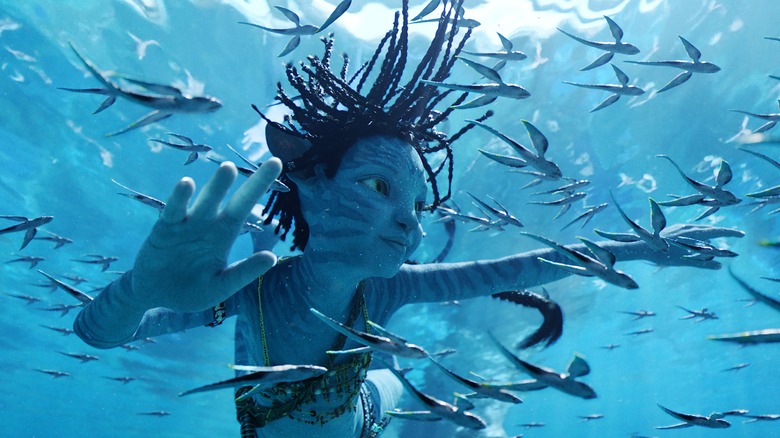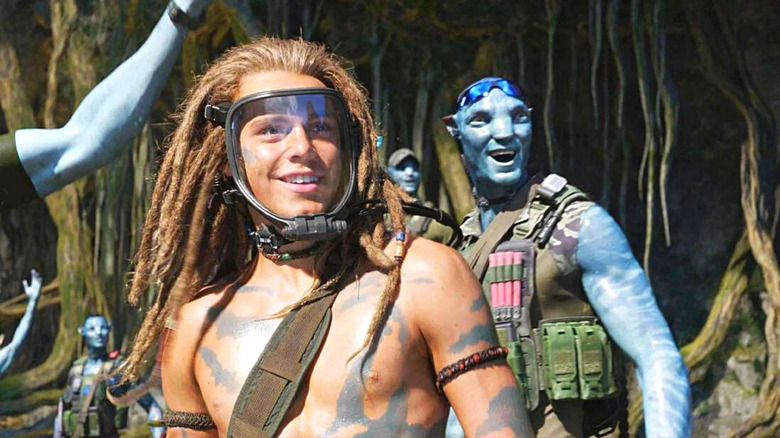James Cameron Believed Avatar: The Way Of Water Should Have 'No Barrier' In Its VFX
Say what you will about "Avatar: The Way of Water," but surely you'd agree that it looks beautiful. It's also one of the most expensive movies ever made, to the point where James Cameron has claimed it needs to make $2 billion at the box office just to be considered a success. But regardless of what the actual box office results are, it seems like all that money put in was well-spent. The visual effects in this movie are almost absurdly, overwhelmingly impressive from start to finish. Any movie that can pull this off is a movie worth making.
A lot of this is due to the fact that Cameron and his VFX team weren't content to just coast off the innovations of the first "Avatar" movie. They took what worked with the 2009 film and improved on it, even reinventing parts of it. "We want it to be better than what we could do before, you know? We learned a lot more," explained senior VFX supervisor Joe Letteri, speaking at a press conference attended by /Film.
One of the biggest changes was the massive improvement in the performance capture technology. At the time of the first movie, Letteri explained, the "Avatar" VFX team was capable of capturing "two characters at a time in a volume." However, by the time the sequel went into production, they were "capturing, like, 24, 25 characters at a time."
Well, technically they were only supposed to go up to around 18 characters at a time before it became too much. "We can push to 22, but every time we did it, we were saying to Jim, it would crash. And then he's like, 'come on, put more in there,'" noted VFX supervisor Richie Baneham.
Constantly improving
Joe Letteri elaborated on this, explaining, "Jim had this idea that this film, going back to the first one, should have no barrier between working on a performance capture stage, working in a digital world, and working in a live action world." He talked about how hard it is to integrate green screens and digital characters, the difficulty of which has led to some noticeably awkward moments in lots of recent big-budget blockbusters. Luckily, the "Avatar" VFX team came up with a way to deal with this. As Letteri put it:
"If we have a character working in the scene, like Stephen Lang playing Quaritch, his capture could be played live on the scene on a camera that was basically on a Spidercam rig that we moved around the set so that the actors, like Jack Champion who's playing Spider, could actually react to Steven's performance. It was a one-to-one performance live on set. We got rid of the tennis balls and they could actually see, you know, what was going on."
It's a technique that helped to fix one of the few visual issues of the first "Avatar" movie — namely, the strangely uncanny vibe of the scenes where the Na'vi interact directly with humans. By themselves, the humans and the Na'vi look great, but when the two are in the same frame together, something seems off. It's an issue that absolutely needed to be improved on with the sequel, where a much larger percentage of the film involves human characters standing next to Na'vi characters. James Cameron's ambition clearly paid off: "The Way of Water" is one of the most visually beautiful films of all time. It only makes you wonder if "Avatar 3" can up the ante even further.
"Avatar: The Way of Water" is now playing in theaters.

